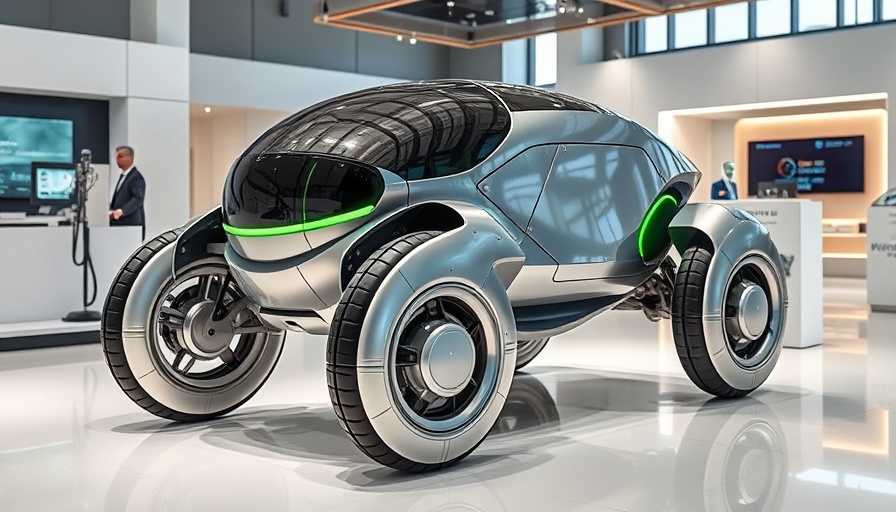
Is Kawasaki's Corleo the Next Leap Forward in Jobsite Mobility?
Kawasaki has recently unveiled an innovative concept called the Corleo, a hydrogen-powered personal mobility vehicle that resembles a horse. This futuristic creation might just revolutionize transportation on construction sites, particularly where traditional vehicles face obstacles.
Design Ingenuity: A Robotic Horse?
The Corleo's saddle-like seat and four legs give it a striking horse-like appearance. Kawasaki claims this vehicle boasts excellent all-terrain capability, allowing it to traverse uneven surfaces that standard vehicles often can't manage. The design incorporates rubberized hooves that ensure stability and grip across a variety of terrains, from grasslands to rocky sites.
Hydrogen-Powered Innovation: What It Means for Sustainability
One of the standout features of the Corleo is its zero-emissions hydrogen engine. With concerns about fuel emissions mounting, the use of hydrogen may position Kawasaki as a leader in eco-friendly construction technology. The vehicle generates power through a canister mounted at the rear, feeding electricity to its legs. This ability to produce clean energy on site could significantly impact the construction industry's carbon footprint in the future.
Stability and Control: The Rider's Experience
Rider control on the Corleo comes from intuitive weight shifts detected through foot pegs and handlebars. The vehicle continuously monitors the rider's movements for balance, enhancing safety during operation. Additionally, the adjustable stirrup length contributes to rider comfort, enabling construction professionals to maintain posture while navigating their surroundings.
Adaptive Technology: Real-Time Navigation Solutions
The instrument panel of the Corleo is packed with digital features, including hydrogen levels and travel routes. There’s even a night navigation system that projects markers onto the ground, guiding riders in low-light environments. This combination of technology supports workers in managing hazardous terrains, improving safety and efficiency on construction sites.
From Concept to Commercial: What’s Next for Kawasaki?
While the Corleo is still in the concept phase, Kawasaki aims for commercial availability by the year 2050. The significant lead time may be aimed at perfecting its design and functionality, but the unveiling at Expo 2025 in Osaka has already sparked interest across various industries. Construction contractors should keep an eye on developments as Kawasaki moves from prototype to production.
Understanding the Impact of Robotics in Construction
The introduction of robotic vehicles in construction is not just a fad, but a trend that reflects the industry's push towards automation and efficiency. Companies like Kawasaki are paving the way for a future where technology and construction merge seamlessly. This evolution could ultimately lead to increased productivity and worker safety, with machines equipped to handle tasks too dangerous or cumbersome for human workers.
Considerations for Contractors: Is the Corleo Right for You?
Contractors should contemplate the challenges of integrating new technology like the Corleo into existing workflows. While the benefits of efficiency and reduced emissions are compelling, infrastructure around job sites may need to adapt for such innovative equipment. Engaging with early adopter forums and discussions could provide invaluable insights as this technology rolls out.
The Future According to Kawasaki: A Glimpse Ahead
As we approach 2050, Kawasaki’s Corleo could be a harbinger of the future of construction mobility. With the construction industry increasingly looking towards sustainability and efficiency, innovations like the Corleo may well lead to new industry standards.
For those interested in learning more about the latest developments in construction technology and how they can adapt business strategies, visiting the Kawasaki website and engaging with industry communities is highly recommended. Understanding these advancements will be crucial as we move into a new era of construction.
 Add Row
Add Row  Add
Add 




Write A Comment